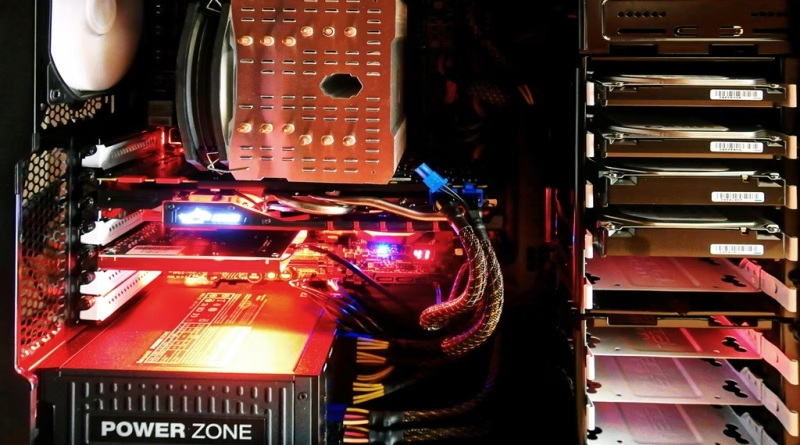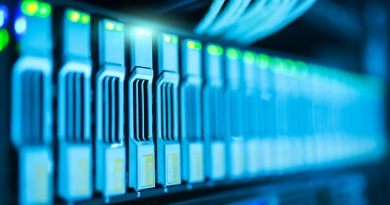A Guide to Understanding Your PC’s Components
Building or upgrading a PC can seem incredibly intimidating. The conversation is full of acronyms and jargon—CPU, GPU, RAM, SSD—and it’s easy to get lost. But a computer isn’t as complicated as you might think.
The best way to understand a PC is to think of it as a highly specialized team of workers, where each member has one critical job to do. When they all work together efficiently, your computer feels fast and responsive.
Let’s open up the case and meet the team. This is your simple guide to understanding the core components of your PC.
1. The CPU (Central Processing Unit) – “The Brain”
- What it is: The CPU is the brain of the entire operation. It’s a small, powerful chip that executes instructions and performs the calculations needed to run your operating system and all your applications.
- The Analogy: If your PC is a company, the CPU is the CEO. It doesn’t do all the work itself, but it processes information and tells all the other components what to do and when to do it.
- What it affects: The speed of your CPU (measured in Gigahertz, or GHz) affects the overall snappiness of your system. A faster CPU will make everything feel quicker, from opening programs to running complex calculations in a spreadsheet. In gaming, it’s responsible for things like game logic and AI behavior.
2. The GPU (Graphics Processing Unit) – “The Artist”
- What it is: The GPU is a specialized processor designed to handle everything you see on your screen. It takes data from the CPU and turns it into the images, videos, and 3D worlds that you interact with.
- The Analogy: If the CPU is the CEO, the GPU is the company’s entire creative department. It’s a team of highly specialized artists and designers responsible for creating every visual element.
- What it affects: For everyday use, a basic GPU is fine. But for gaming, the GPU is the single most important component. A more powerful GPU allows you to play games at higher resolutions, turn on more graphical effects, and get higher frame rates (fps), resulting in a smoother, more beautiful visual experience. It’s also critical for creative tasks like video editing and 3D rendering.
3. The RAM (Random Access Memory) – “The Workbench”
- What it is: RAM is your computer’s ultra-fast, short-term memory. It’s where your PC holds all the applications and data you are actively using right now.
- The Analogy: Think of RAM as your physical workbench. The bigger your workbench, the more projects and tools you can have out at the same time without everything becoming a cluttered, slow mess. When you close an app, it gets put away, clearing space on the bench for the next task.
- What it affects: The amount of RAM you have (measured in Gigabytes, or GB) determines your multitasking capability. With too little RAM, your computer will feel sluggish when you have many browser tabs or multiple applications open at once. For most users in 2025, 16GB is the sweet spot.
4. The Storage (SSD/HDD) – “The Library”
- What it is: Your storage drive is the long-term library for all your data. Your operating system (like Windows), your programs, your games, and all your personal files are kept here, even when the power is off.
- The Analogy: If RAM is your active workbench, your storage drive is the massive library or warehouse where all your tools and projects are stored when you’re not using them.
- What it affects: The speed of your storage drive determines how quickly your PC can boot up and how fast it can load programs from the “library” onto your RAM “workbench.” This is why upgrading from an old mechanical Hard Disk Drive (HDD) to a modern Solid-State Drive (SSD) makes a computer feel so much faster.
5. The Motherboard – “The Nervous System”
- What it is: The motherboard is the large circuit board that everything else plugs into.
- The Analogy: It’s the central nervous system and skeleton of the PC. It connects the brain (CPU) to the artist (GPU), the workbench (RAM), and the library (Storage), allowing them all to communicate and work together.
- What it affects: The motherboard determines what components are compatible with your system (e.g., which CPUs you can use) and what features you have (like the number of USB ports).
6. The Power Supply Unit (PSU) – “The Heart”
- What it is: The PSU is a simple box that takes the high-voltage power from your wall outlet and converts it into the stable, low-voltage power that your delicate components need to run.
- The Analogy: It’s the heart of the system, pumping the lifeblood (electricity) to every other part of the body.
- What it affects: A good quality PSU provides clean, stable power, which is essential for system stability. A cheap, low-quality PSU can cause random crashes and even damage your other components.
Understanding how each member of this team contributes makes the world of PC hardware much less intimidating and empowers you to make smarter decisions about your next upgrade or build.




